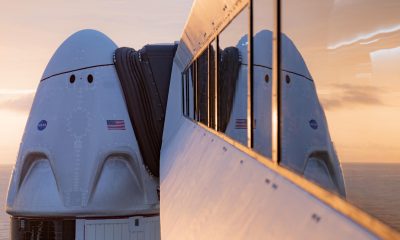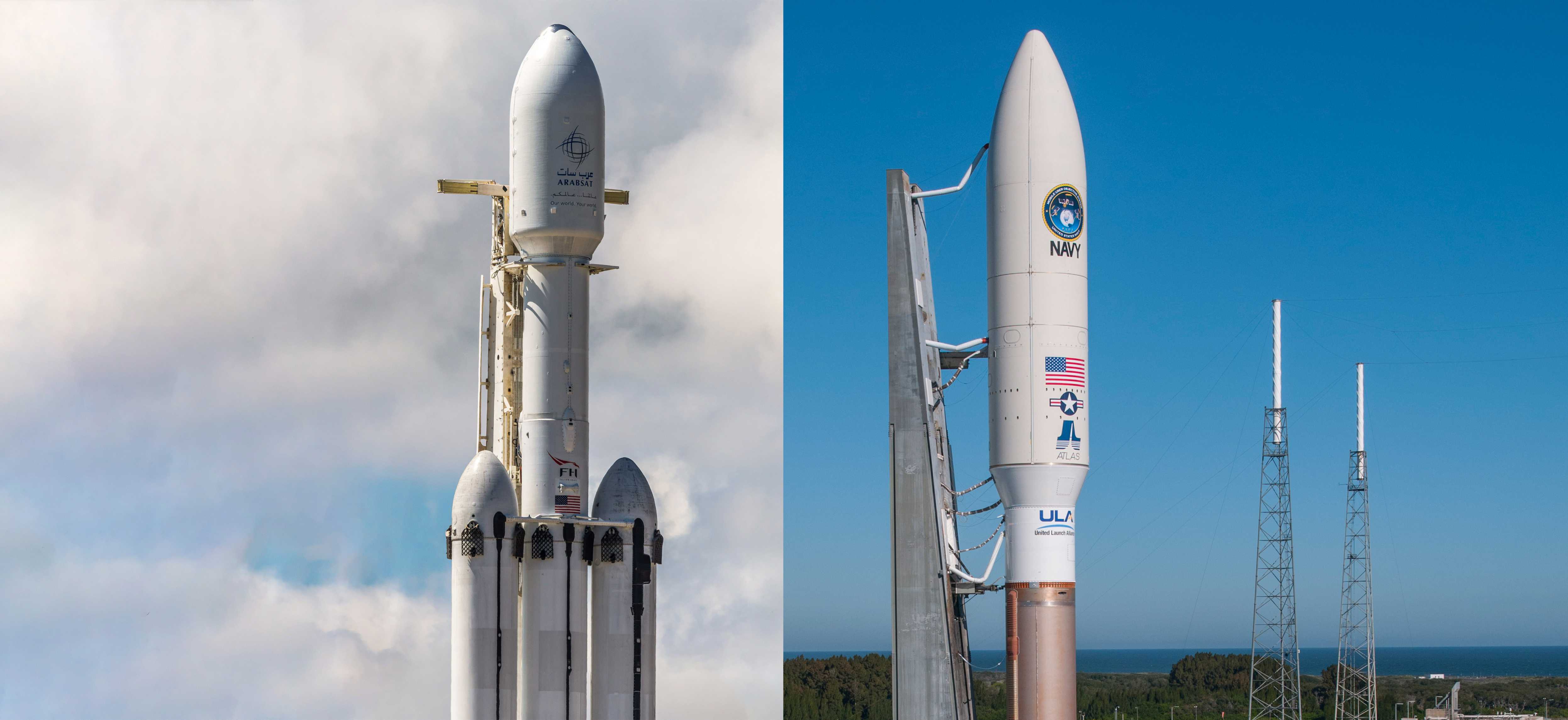

News
SpaceX may have signed a fairing agreement with ULA supplier RUAG (Update: no agreement)
According to unverified and speculative comments reportedly made to a member of the space industry by a RUAG spokesperson, the prominent aerospace supplier may have reached an agreement with SpaceX to manufacture a handful of larger payload fairings for future Falcon 9 and Heavy launches.
In the likely event that SpaceX is one of two contractors awarded a portion of several dozen US military launch contracts next year, the company will need to be able to cater to niche requirements, including accommodating unusually tall military satellites. Those satellites can be so tall that SpaceX’s own payload fairing – generally middle-of-the-pack relative to competitors’ offerings – may be too short, meaning that SpaceX will have to find ways around that minor shortcoming.
Update: Tim Chen has retracted his earlier comments and has stated that there is actually no agreement currently in place with SpaceX for RUAG to produce taller fairings out of its new Decatur, AL factory.
Additionally, ULA CEO Tory Bruno clarified that the company’s “[new fairing] has [ULA] intellectual property in its design and manufacture … [and] is currently planned only for use on Atlas and Vulcan”, meaning that any cooperation between SpaceX and RUAG would likely require a new production facility and a somewhat different fairing design.
“ULA’s new fairing, which is built in our factory in Decatur, has our intellectual property in its design and manufacture. This fairing is currently planned only for use on Atlas and Vulcan. You would want to ask RUAG about business they might have with their other customers.”
Tory Bruno, August 14th, 2019
Regardless of the veracity of these recent claims, it appears that SpaceX has three obvious responses at its disposal: design and build an entirely new variant of its universal Falcon fairing, purchase the necessary fairings from an established supplier, or bow out of launch contract competitions that demand it. The latter option is immediately untenable given that it could very well mean bowing out of the entire US military competition, known as Phase 2 of the National Security Space Launch program’s (NSSL; formerly EELV) Launch Services Procurement (LSP).
For dubious reasons, the US Air Force (USAF) has structured the NSSL Phase 2 acquisition in such a way that – despite there being four possible competitors – only two will be awarded contracts at its conclusion. The roughly ~30 launch contracts up for grabs would be split 60:40 between the two victors, leaving two competitors completely emptyhanded. In short, bowing out of the Phase 2 competition could mean forgoing as many as one or two-dozen contracts worth at least $1-2B, depending on the side of the 60:40 split.
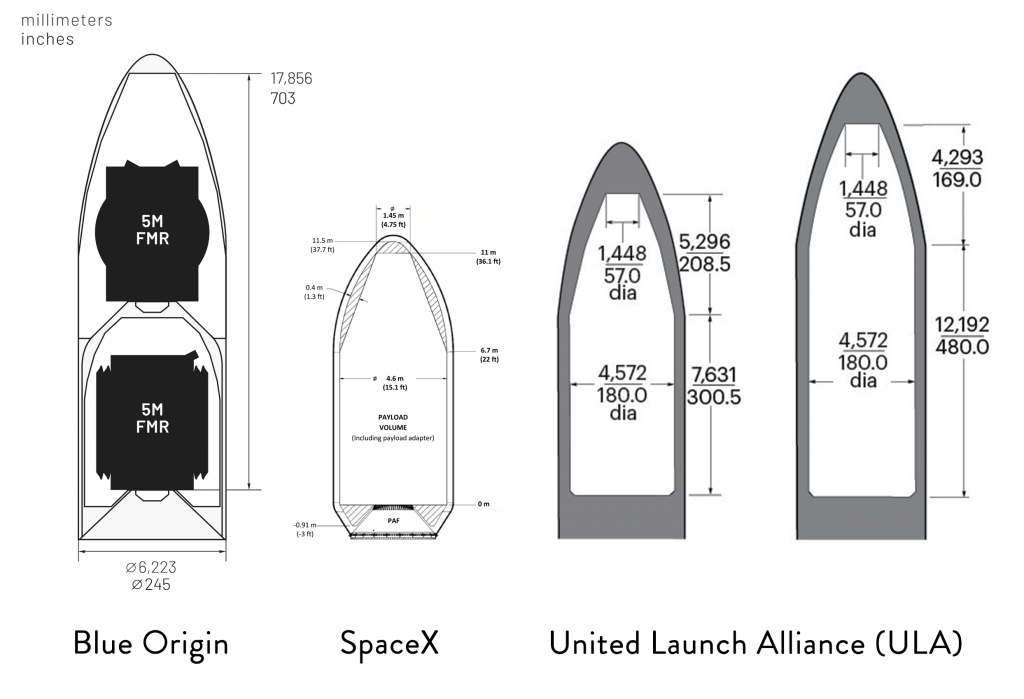
According to a handful of recent comments and developments, SpaceX has likely sided with the option of procuring taller fairings from an industry supplier. As it turns out, European company RUAG has effectively cornered the Western rocket fairing market, with SpaceX being the only Western launch company currently building its own fairings. RUAG builds fairings for both Arianespace’s Ariane 5 and Vega rockets and ULA’s Atlas V. Additionally, RUAG will build and supply fairings for both companies’ next-gen rockets – Arianespace’s Ariane 6 and ULA’s Vulcan – and builds fairings for a number of smallsat launch companies.
Comments made in June by a RUAG official confirmed that there was some semblance of a relationship between SpaceX and RUAG for the purpose of satisfying USAF needs for taller fairings, although the phrasing suggested that the cooperation was in its early stages and nothing had been solidified.
“In a June 12 letter to Smith, the company’s CEO Peter Guggenbach makes the case that legislation forcing access to suppliers is unnecessary in this case because RUAG does not have an exclusive arrangement with ULA and is willing to work with SpaceX or any other launch providers.
“For this competition, we are in the process of submitting or have submitted proposals to multiple prime contractors regarding launch vehicle fairings. In those agreements, we share technical data to support a prime contractor’s bid while protecting our intellectual property.”
RUAG vice president Karl Jensen told SpaceNews the company has a “significant partnership” with ULA but is looking to work with others too. “We have an offer to SpaceX,” he said. “We don’t know if they’ll accept it.”
SpaceNews, 06/13/2019
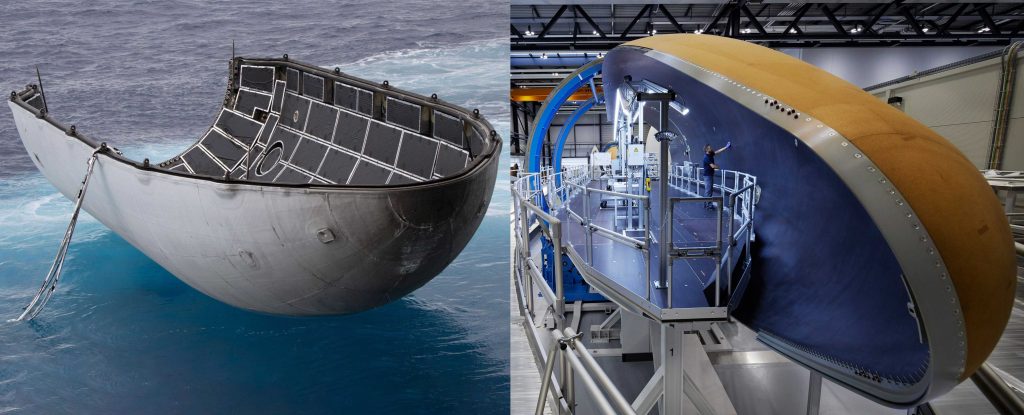
Interestingly, although ULA’s RUAG-built Atlas V fairing is slightly narrower than SpaceX’s 5.2m (17 ft) diameter fairing, Atlas V’s largest fairing is significantly taller, supporting payloads up to 16.5m (54 ft) tall compared to 11m (36 ft) for Falcon 9 and Heavy. Given that just a tiny portion of military spacecraft actually need fairings that tall, SpaceX is apparently not interested in simply modifying its own fairing design and production equipment to support a 20-30% stretch.
This likely relates in part to the fact that one of SpaceX’s three NSSL Phase 2 competitors – Northrop Grumman (Omega), Blue Origin (New Glenn), and ULA (Vulcan) – are guaranteed to receive hundreds of millions of dollars of development funding after winning one of the two available slots (60% or 40% of contracts). SpaceX, on the other hand, will receive no such funding while still having to meet the same stringent USAF requirements compete in LSP Phase 2. Of note, Congressman Adam Smith managed to insert a clause into FY2020’s defense authorization bill that could disburse up to $500M to SpaceX in the event that the company is one of Phase 2’s two winners.
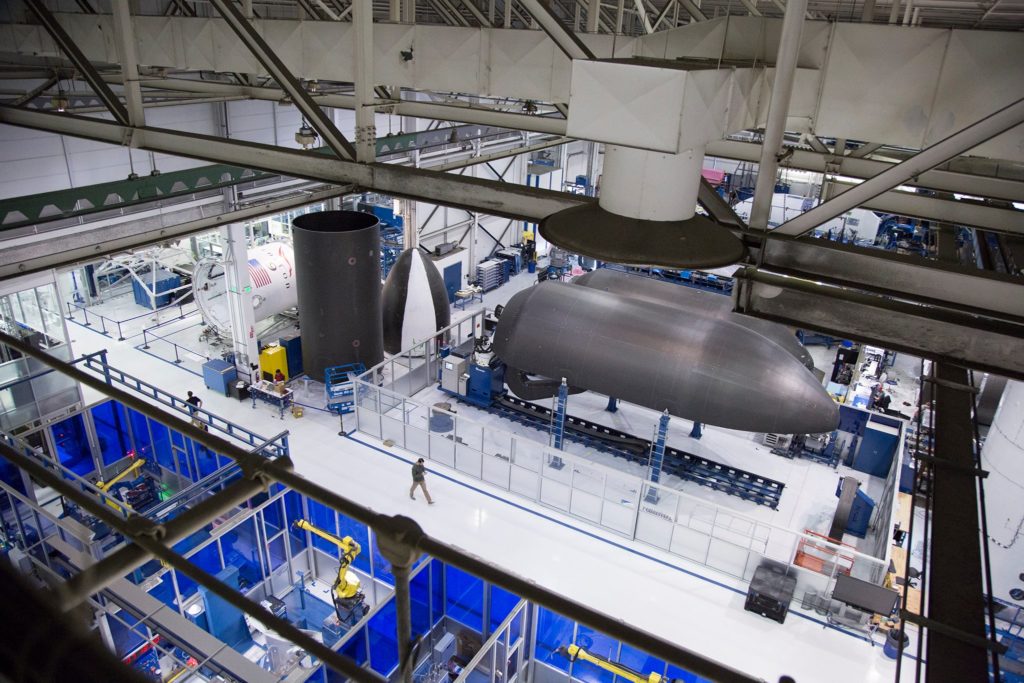
Despite this potential influx of infrastructure-focused funds, SpaceX may still be pursuing taller Falcon fairings from RUAG as a backup in the event that the company is not one of the two Phase 2 winners or is unable to use some of the $500M secured by Rep. Smith to develop its own stretched fairing.
On August 12th, SpaceX – along with Blue Origin, ULA, and NGIS – submitted bids for NSSL Phase 2 launch services, confirming that all four companies will indeed be in the running for contracts. The USAF is not expected to announce the results of this competition until Q2 2020.
Check out Teslarati’s Marketplace! We offer Tesla accessories, including for the Tesla Cybertruck and Tesla Model 3.
News
SpaceX’s Crew-11 mission targets July 31 launch amid tight ISS schedule
The flight will lift off from Launch Complex 39A at Kennedy Space Center in Florida.
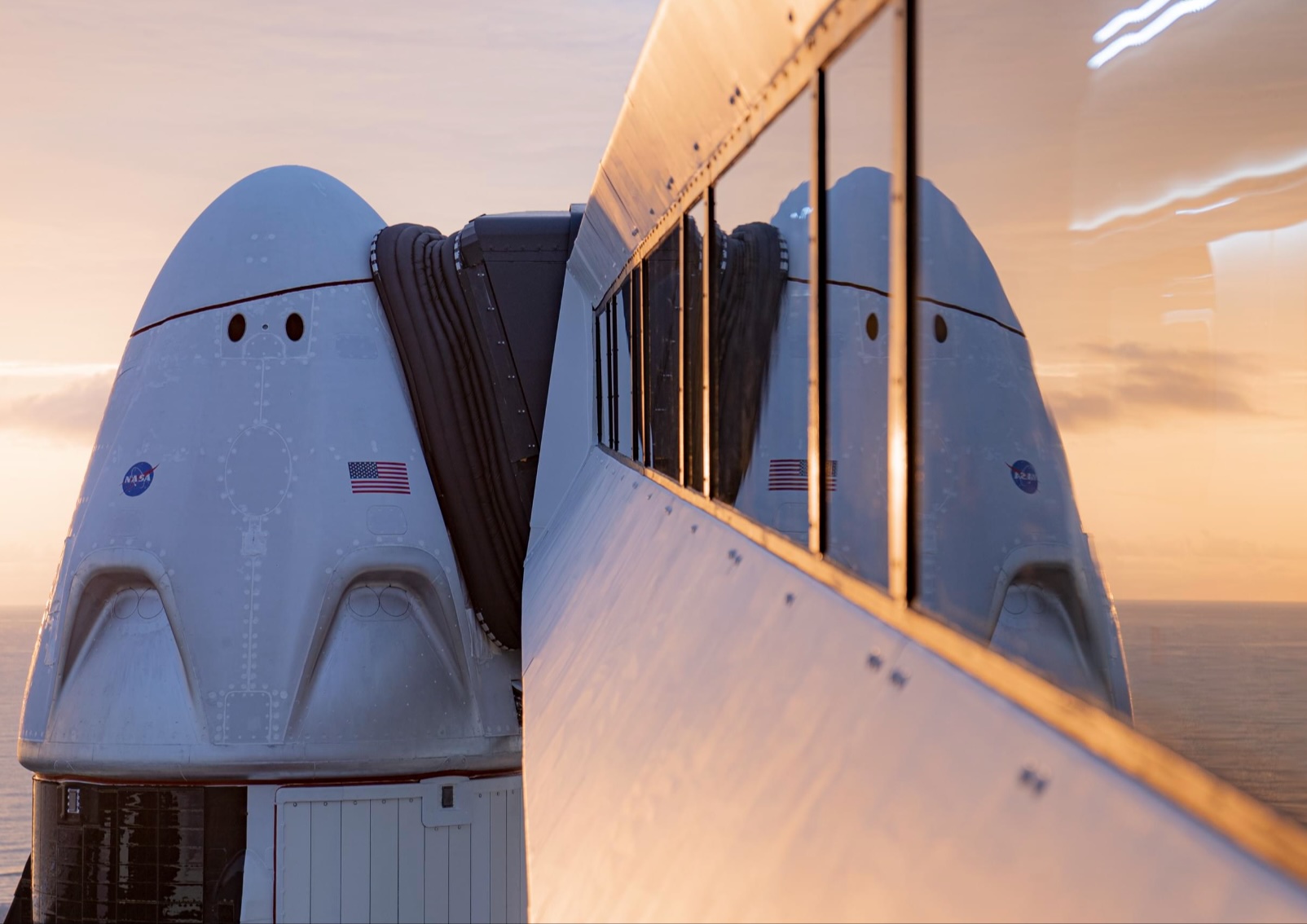
NASA and SpaceX are targeting July 31 for the launch of Crew-11, the next crewed mission to the International Space Station (ISS). The flight will lift off from Launch Complex 39A at Kennedy Space Center in Florida, using the Crew Dragon Endeavour and a Falcon 9 booster.
Crew Dragon Endeavour returns
Crew-11 will be the sixth flight for Endeavour, making it SpaceX’s most experienced crew vehicle to date. According to SpaceX’s director of Dragon mission management, Sarah Walker, Endeavour has already carried 18 astronauts representing eight countries since its first mission with NASA’s Bob Behnken and Doug Hurley in 2020, as noted in an MSN report.
“This Dragon spacecraft has successfully flown 18 crew members representing eight countries to space already, starting with (NASA astronauts) Bob (Behnken) and Doug (Hurley) in 2020, when it returned human spaceflight capabilities to the United States for the first time since the shuttle retired in July of 2011,” Walker said.
For this mission, Endeavour will debut SpaceX’s upgraded drogue 3.1 parachutes, designed to further enhance reentry safety. The parachutes are part of SpaceX’s ongoing improvements to its human-rated spacecraft, and Crew-11 will serve as their first operational test.
The Falcon 9 booster supporting this launch is core B1094, which has launched in two previous Starlink missions, as well as the private Ax-4 mission on June 25, as noted in a Space.com report.
The four-members of Crew-11 are NASA astronauts Zena Cardman and Mike Fincke, as well as Japan’s Kimiya Yui and Russia’s Oleg Platonov.
Tight launch timing
Crew-11 is slated to arrive at the ISS just as NASA coordinates a sequence of missions, including the departure of Crew-10 and the arrival of SpaceX’s CRS-33 mission. NASA’s Bill Spetch emphasized the need for careful planning amid limited launch resources, noting the importance of maintaining station altitude and resupply cadence.
“Providing multiple methods for us to maintain the station altitude is critically important as we continue to operate and get the most use out of our limited launch resources that we do have. We’re really looking forward to demonstrating that capability with (CRS-33) showing up after we get through the Crew-11 and Crew-10 handover,” Spetch stated.
Lifestyle
EV fans urge Tesla to acquire Unplugged Performance for edge in fleet and security industry
Unplugged Performance has built a name for itself by producing performance upgrades for Tesla vehicles.
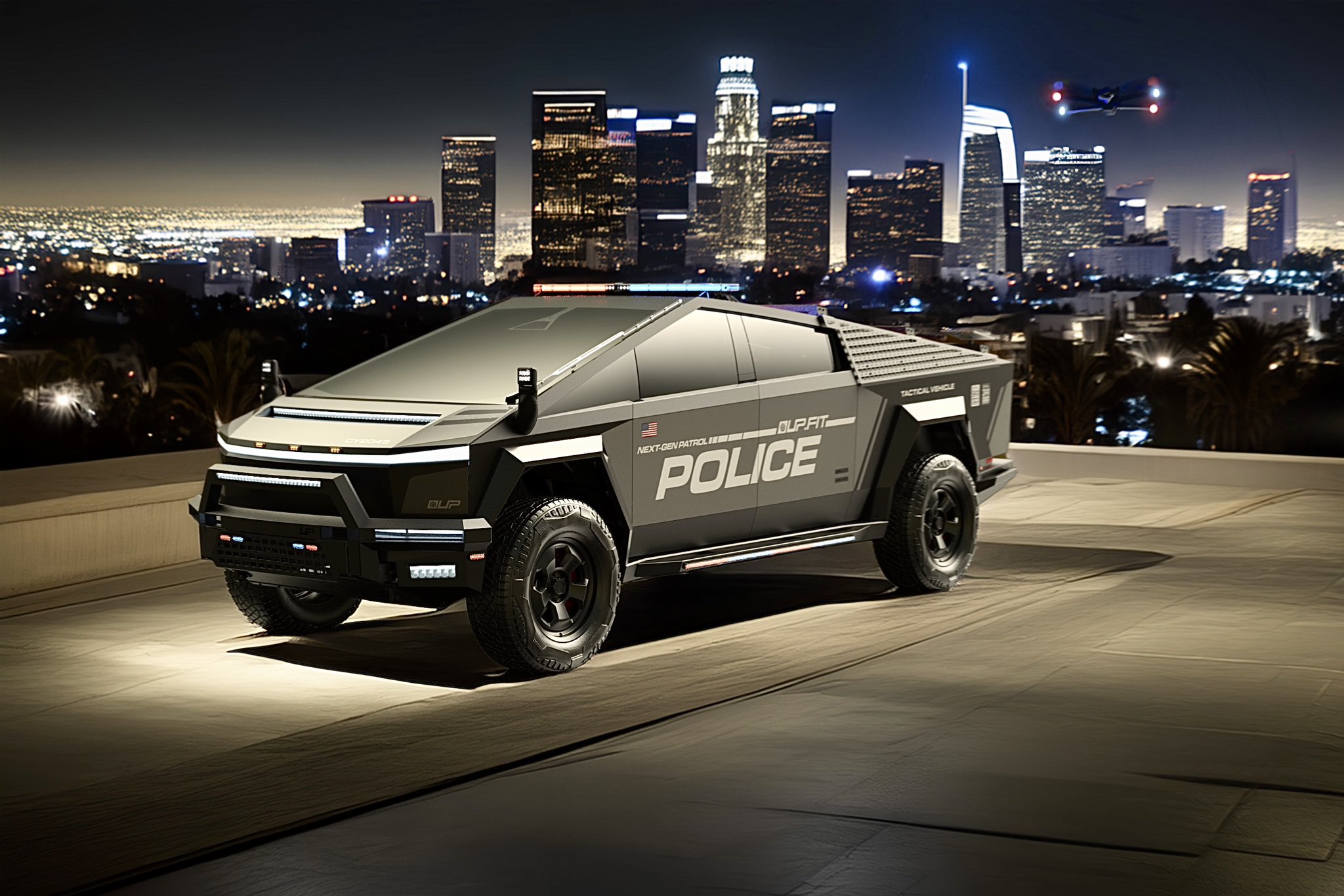
A growing number of Tesla enthusiasts and longtime community voices are calling on the electric vehicle maker to acquire Unplugged Performance, a California-based aftermarket company best known for tuning Tesla vehicles and developing specialized government fleet solutions under its UP.FIT division.
The idea was once considered a niche proposal among EV fans, but it is now gaining serious attention not just as a performance play but as a strategic move to deepen Tesla’s roots in the fleet and security industry.
A strategic fit
Unplugged Performance has built a name for itself by producing performance upgrades for Tesla vehicles, from track-optimized components to visual and aerodynamic upgrades. But in recent years, its UP.FIT division has pivoted toward a more functional future by outfitting Tesla vehicles like Model Ys for police, military, and government use.
That work has sparked growing calls for closer collaboration with Tesla, especially as the EV maker increasingly leans into autonomy, AI, and fleet services as core components of its next chapter.
“I posted this four years ago, but I think it’s more true now than ever,” wrote Whole Mars Catalog, a well-known Tesla investor and FSD Beta tester, on X. “Tesla should buy Unplugged. But not just as a Performance division. What they are doing with UP.FIT unlocks large government and commercial fleet purchases that can improve utilization.”
Tesla fans such as shareholder Sawyer Merritt echoed the sentiment, calling Unplugged a “great fit within Tesla.” adding, “They are literally located directly next to Tesla’s design studio in Hawthorne.”
Enabling the next wave
Supporters of the idea noted that integrating Unplugged into Tesla’s corporate structure could help accelerate the adoption of autonomous technologies in government sectors. With UP.FIT patrol cars already in use across some U.S. police departments, Tesla fans envisioned a future where self-driving Teslas could potentially revolutionize law enforcement, search-and-rescue, and public service logistics.
“Just imagine how autonomous patrol cars could transform policing and bring us into a safer future,” the veteran FSD tester wrote.
The benefits could also extend to Tesla’s existing consumer base. “They also have some incredible products in the works that I think will appeal to many ordinary Tesla drivers — not just those looking for performance or mods. Stuff that’s so good it should have come straight from the design studio next door,” Whole Mars Catalog noted.
Unplugged Performance, founded in 2013, shares not just a product vision with Tesla, but also geography. Its Hawthorne headquarters sits directly adjacent to Tesla’s design studio, and the two companies have maintained a close working relationship over the years. The aftermarket firm has long positioned itself as a “mission-aligned” partner to Tesla.
In response to the recent calls for acquisition, Unplugged Performance acknowledged the support from the community. “Our very existence is to support the Tesla mission with @UpfitTesla and @UnpluggedTesla,” Unplugged CEO Ben Schaffer posted on X. “We love working with Tesla and are grateful for the community’s support since 2013!”
News
Tesla debuts hands-free Grok AI with update 2025.26: What you need to know
All new Tesla vehicles delivered on or after July 12, 2025, will include Grok AI out of the box

Tesla has begun rolling out Grok, an in-car conversational AI assistant developed by xAI, to eligible vehicles starting July 12. The feature marks the most direct integration yet between Elon Musk’s artificial intelligence startup and Tesla’s consumer product lineup, offering drivers hands-free access to a chat-style companion while on the road.
Grok comes pre-installed on new vehicles
According to Tesla’s FAQ page for the feature, all new vehicles delivered on or after July 12, 2025, will include Grok AI out of the box. Owners of older vehicles may gain access through an over-the-air update, provided their vehicle meets a few hardware and software requirements.
Specifically, Grok is currently only supported on Tesla models equipped with an AMD infotainment processor and running vehicle software version 2025.26 and higher. Compatible models include the Model S, Model 3, Model X, Model Y, and Cybertruck. A Premium Connectivity subscription or active Wi-Fi connection is also required.
Tesla notes that additional vehicle compatibility may arrive in future software updates.
Grok’s features and limitations for now
Drivers can engage with Grok using the App Launcher or by pressing and holding the voice command button on the steering wheel. Grok is designed to answer questions and hold conversations using natural language, offering responses tailored to its chosen personality—ranging from “Storyteller” to the more eccentric “Unhinged.”
For fun, Tesla posted a demonstration of Grok likely running on “Unhinged” talking about what it would do to Optimus when they are on a date, much to the shock of the humanoid robot’s official social media account.
It should be noted, however, that Grok cannot currently issue commands to the vehicle itself, at least for now. Traditional voice commands for tasks like climate control, navigation, or media remain separate from Grok as of writing.
The feature is being released in Beta and does not require a Grok account or xAI subscription to activate, although that policy may change over time.
Grok privacy and in-car experience
Tesla emphasizes that interactions with Grok are securely processed by xAI and not linked to a user’s Tesla account or vehicle. Conversations remain anonymous unless a user signs into Grok separately to sync their history across devices.
Tesla has also begun promoting Grok directly on its official vehicle webpages, showcasing the feature as part of its in-car experience, further highlighting the company’s increasing focus on AI and infotainment features on its all-electric vehicles.
-

 Elon Musk2 weeks ago
Elon Musk2 weeks agoTesla investors will be shocked by Jim Cramer’s latest assessment
-

 Elon Musk3 days ago
Elon Musk3 days agoxAI launches Grok 4 with new $300/month SuperGrok Heavy subscription
-

 Elon Musk5 days ago
Elon Musk5 days agoElon Musk confirms Grok 4 launch on July 9 with livestream event
-

 News1 week ago
News1 week agoTesla Model 3 ranks as the safest new car in Europe for 2025, per Euro NCAP tests
-

 Elon Musk1 week ago
Elon Musk1 week agoxAI’s Memphis data center receives air permit despite community criticism
-

 News2 weeks ago
News2 weeks agoXiaomi CEO congratulates Tesla on first FSD delivery: “We have to continue learning!”
-

 Elon Musk2 weeks ago
Elon Musk2 weeks agoTesla scrambles after Musk sidekick exit, CEO takes over sales
-

 News2 weeks ago
News2 weeks agoTesla sees explosive sales growth in UK, Spain, and Netherlands in June


